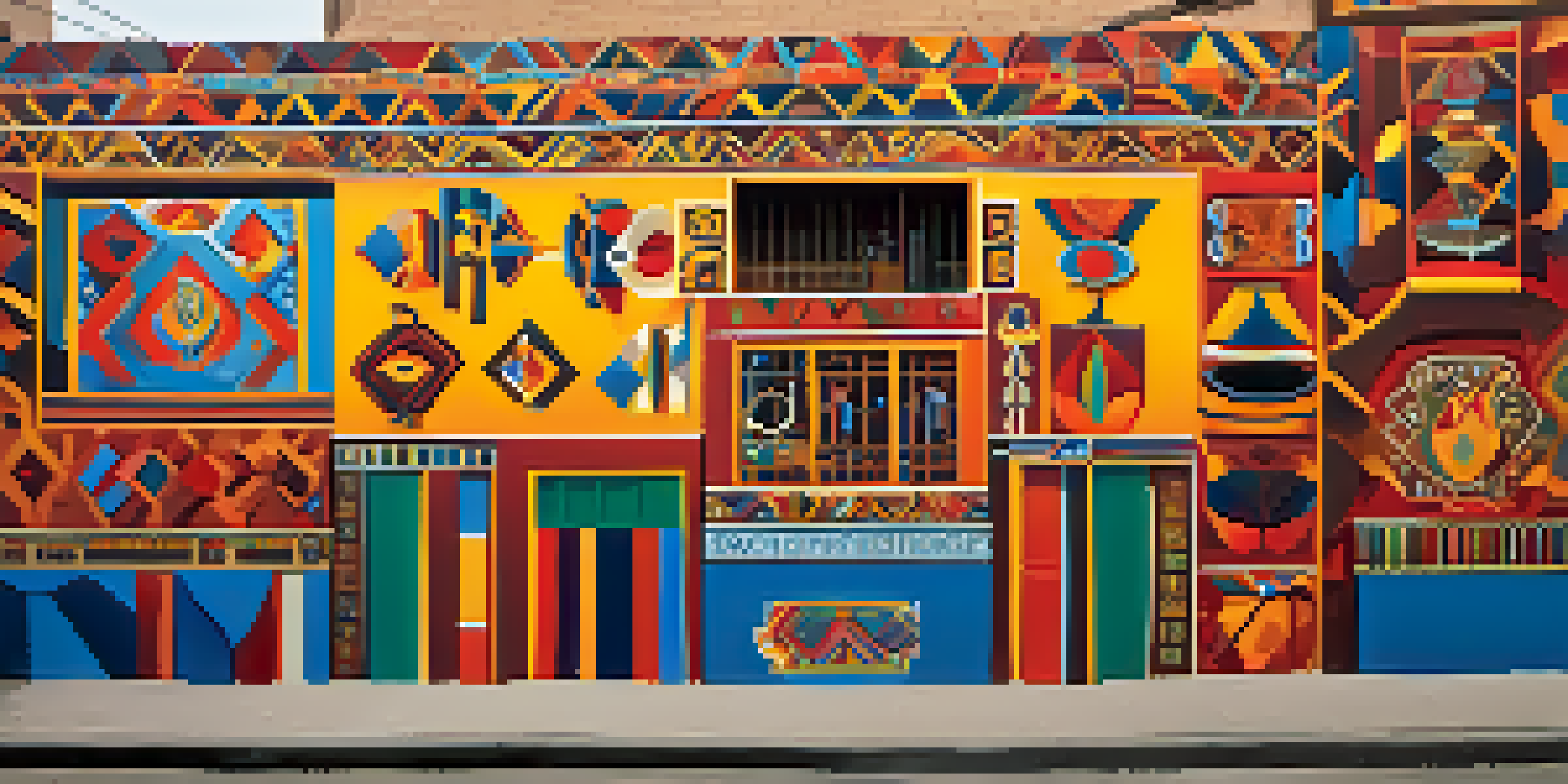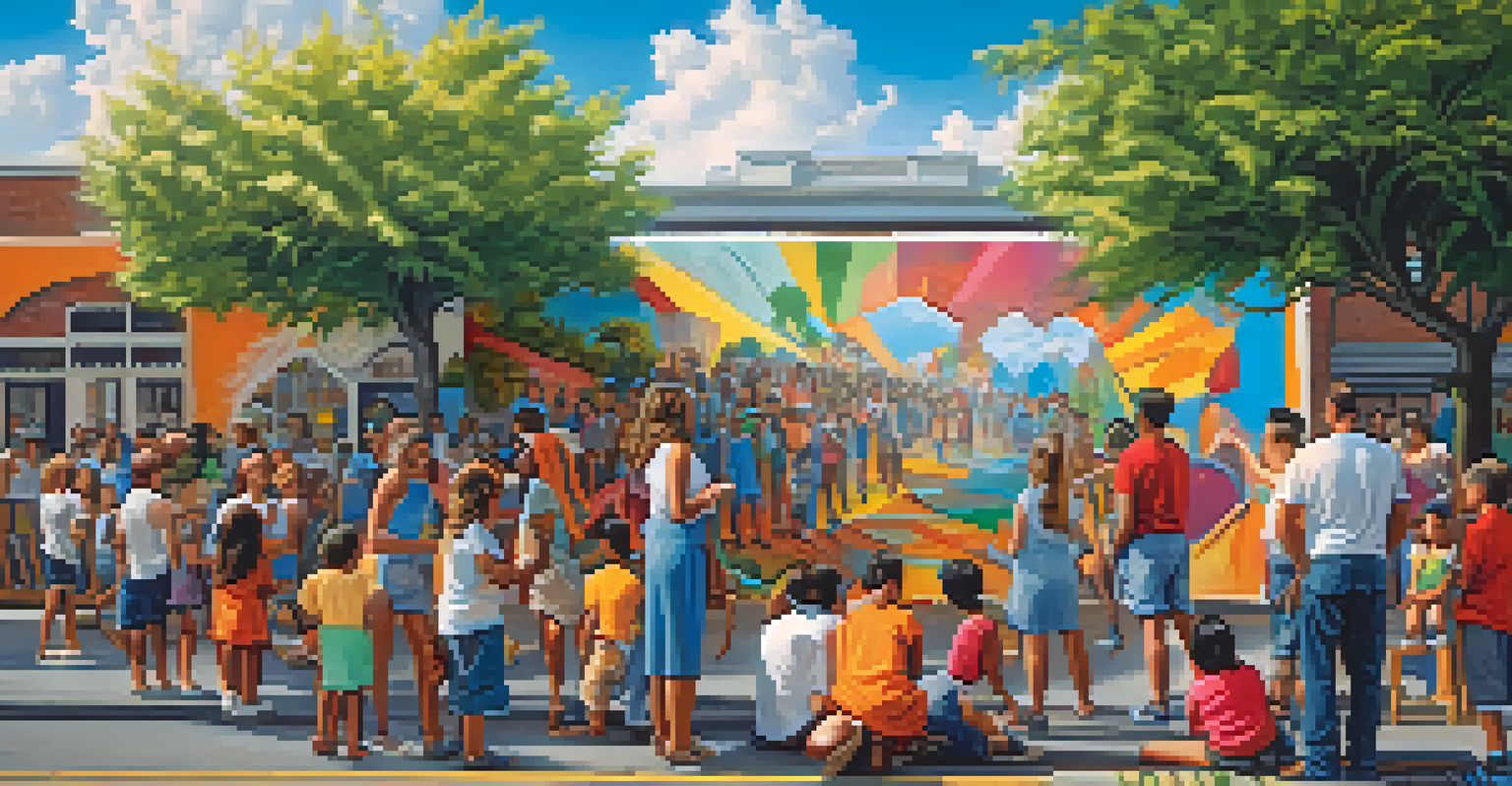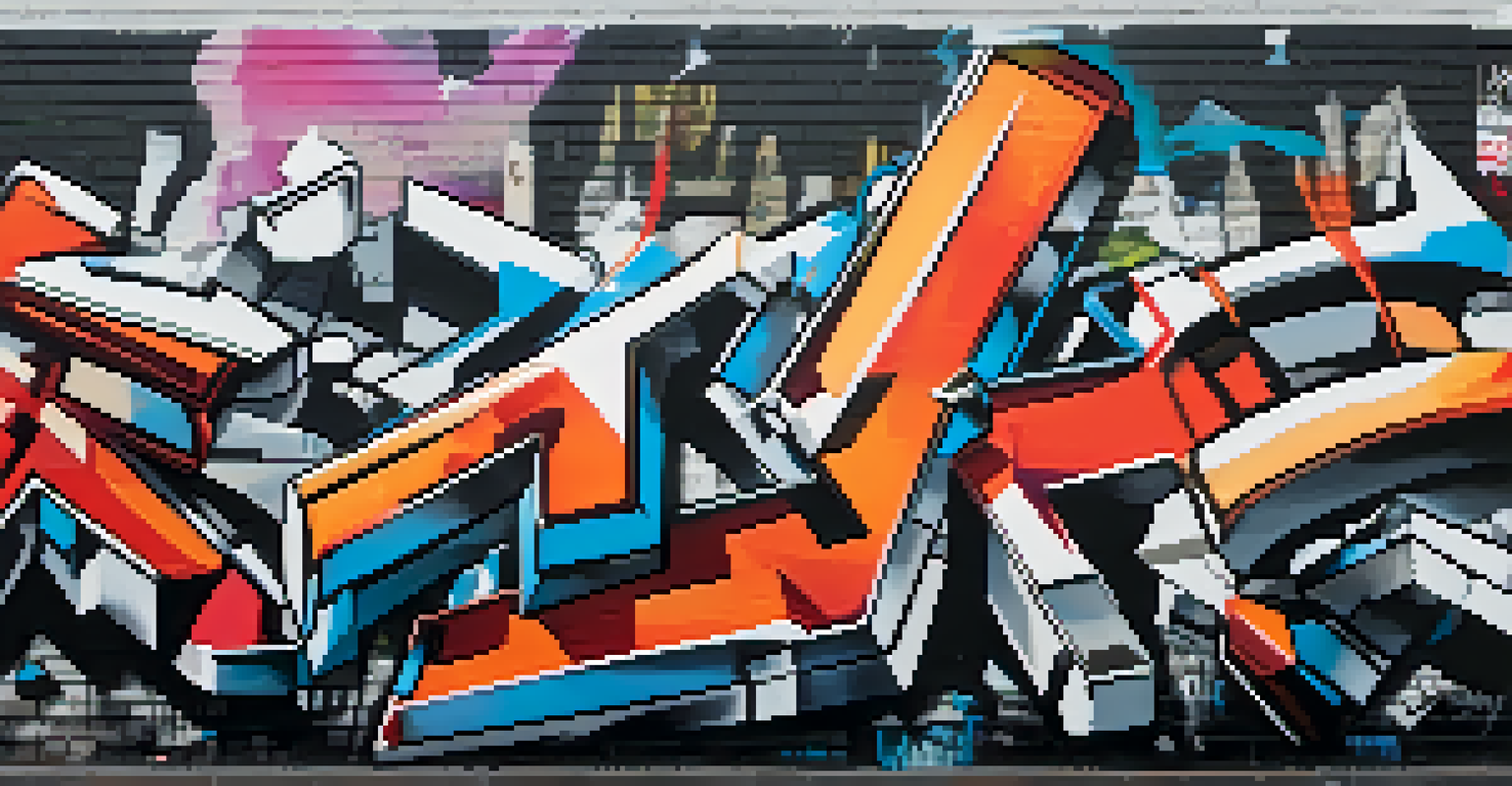Exploring the Origins of Street Art in Peru's Urban Landscape

Understanding the Cultural Context of Peruvian Street Art
To appreciate street art in Peru, it's essential to grasp its cultural backdrop. Street art here is woven into the fabric of urban life, reflecting the rich history and diverse influences of the country. From colonial times to modern political movements, art has been a voice for the people, often expressing their struggles and aspirations.
Art is a reflection of society, and street art is a mirror of the community's struggles and aspirations.
Peru's vibrant culture, influenced by indigenous traditions and colonial history, shapes the messages conveyed through street art. The murals and graffiti we see today are not merely decorative; they serve as a powerful medium for community engagement. Street artists play a crucial role in giving a voice to the voiceless, illuminating social issues and cultural pride.
In essence, street art in Peru is a dialogue between the past and the present, showcasing a unique blend of artistic expression that invites both locals and tourists to engage with the city’s narrative.
The Evolution of Street Art in Peru
Street art in Peru has evolved significantly over the years, transitioning from basic graffiti to intricate murals that tell compelling stories. In the 1980s, graffiti was primarily a form of rebellion, often associated with political dissidence. As the years progressed, artists began to embrace different styles, techniques, and themes, reflecting the broader artistic movements worldwide.

The rise of street art in urban areas like Lima can be traced back to the early 2000s, when artists sought to reclaim public spaces. This movement was fueled by a desire to beautify neglected neighborhoods and create a sense of community. Today, street art is not only accepted but celebrated as an integral part of urban culture.
Cultural Roots of Peruvian Street Art
Peruvian street art reflects the country's rich history and diverse cultural influences, serving as a voice for the community.
As street art continues to evolve, it mirrors the changes in society, offering a glimpse into the thoughts and feelings of the people. Artists now explore themes of identity, environment, and social justice, making their work more relevant and impactful.
Influences of Indigenous Culture on Peruvian Street Art
Indigenous culture plays a pivotal role in shaping the aesthetic and thematic elements of Peruvian street art. Symbols, patterns, and colors drawn from ancient traditions often find their way into contemporary pieces. This fusion not only honors the rich heritage of Peru but also invites conversations about cultural identity and preservation.
The role of the artist is to make the revolution irresistible.
For example, artists may incorporate traditional motifs from Andean textiles or mythology, creating a bridge between the past and present. This connection fosters a deeper appreciation for the indigenous cultures that have shaped Peru's history. It also encourages younger generations to engage with their roots.
By blending traditional elements with modern techniques, street artists create a unique visual language that resonates with both locals and visitors. This cultural dialogue enriches the urban landscape, allowing everyone to experience the beauty of Peru's diverse heritage.
Political Messages in Peruvian Street Art
Street art in Peru often serves as a powerful vehicle for political expression. Many artists use their work to comment on social issues, government policies, and human rights violations. These murals and graffiti pieces become a form of protest, challenging the status quo and demanding change.
For instance, during periods of political unrest, artists have transformed walls into canvases that reflect public sentiment. From anti-corruption messages to calls for social justice, street art captures the pulse of society, making it impossible for passersby to ignore. This art form allows citizens to voice their frustrations and hopes in a visually striking manner.
Street Art as Political Expression
Artists use street art as a powerful form of protest, addressing social issues and government policies through their work.
In this way, Peruvian street art transcends aesthetics; it becomes a critical part of the conversation surrounding democracy and civic engagement. It encourages viewers to think critically about the world around them and inspires action.
The Role of Community in Street Art Creation
Community involvement is a cornerstone of street art in Peru. Many artists collaborate with local residents to create murals that reflect their collective identity and aspirations. This process not only empowers communities but also fosters a sense of ownership over public spaces.
By engaging with the community, artists ensure that their work resonates with the people it represents. This collaborative spirit often leads to projects that address local issues, such as education, health, and environmental sustainability. The result is art that speaks directly to the heart of the community.
Moreover, community-driven street art initiatives help to break down barriers between artists and audiences. They create opportunities for dialogue, understanding, and shared experiences, making art a truly communal endeavor.
Global Influences Shaping Peruvian Street Art
Peruvian street art does not exist in a vacuum; it is influenced by global trends and movements. Artists from around the world contribute to a dynamic exchange of ideas, techniques, and styles that enrich local art scenes. This international perspective helps Peruvian artists to expand their creative horizons.
For instance, the rise of social media has enabled artists to showcase their work beyond local boundaries. Platforms like Instagram allow them to connect with global audiences and other artists, sparking collaborations and new ideas. This interconnectedness fosters a sense of solidarity among street artists worldwide.
Community Collaboration in Art
Community involvement is vital in Peruvian street art, empowering locals and ensuring the art resonates with their collective identity.
As a result, Peruvian street art often incorporates elements from various global movements, creating a unique hybrid style. This blending of influences showcases the country's adaptability and creativity, making its urban landscape a vibrant tapestry of artistic expression.
The Future of Street Art in Peru
As we look ahead, the future of street art in Peru appears promising and dynamic. With a growing interest in public art, cities are increasingly recognizing the value of murals and graffiti as cultural assets. This shift in perception can lead to more support for artists and initiatives that promote street art.
Moreover, as social issues continue to emerge, street art will remain a vital platform for expression and activism. Artists will likely continue to address pressing concerns while exploring new themes and techniques. The evolution of street art in Peru will reflect the changing landscape of society itself.

Ultimately, the future of Peruvian street art lies in its ability to adapt and resonate with the community. As artists continue to engage with their surroundings, their work will undoubtedly inspire future generations, ensuring that street art remains a vibrant part of Peru's cultural identity.